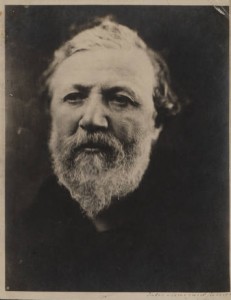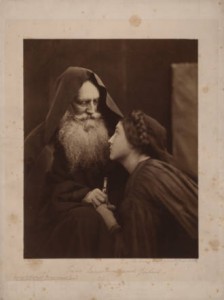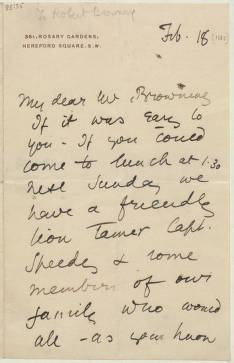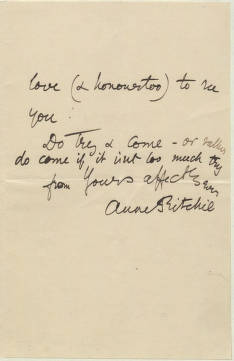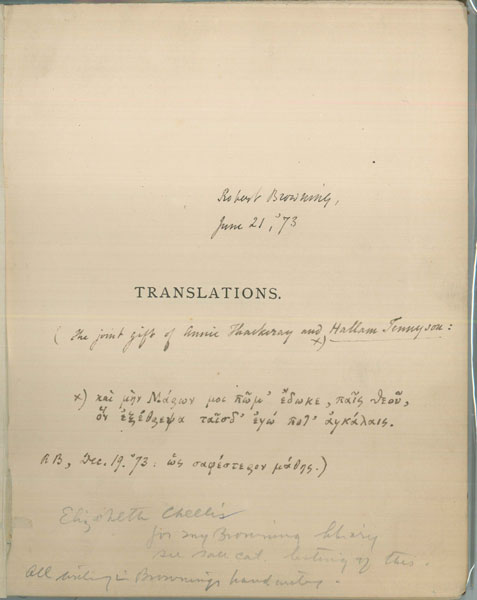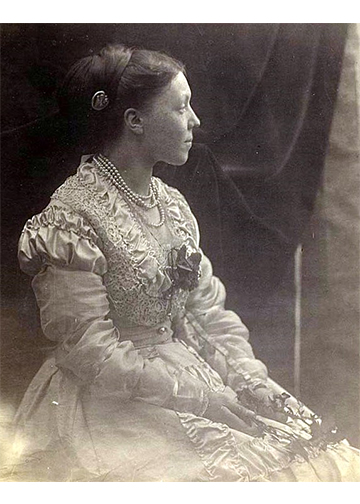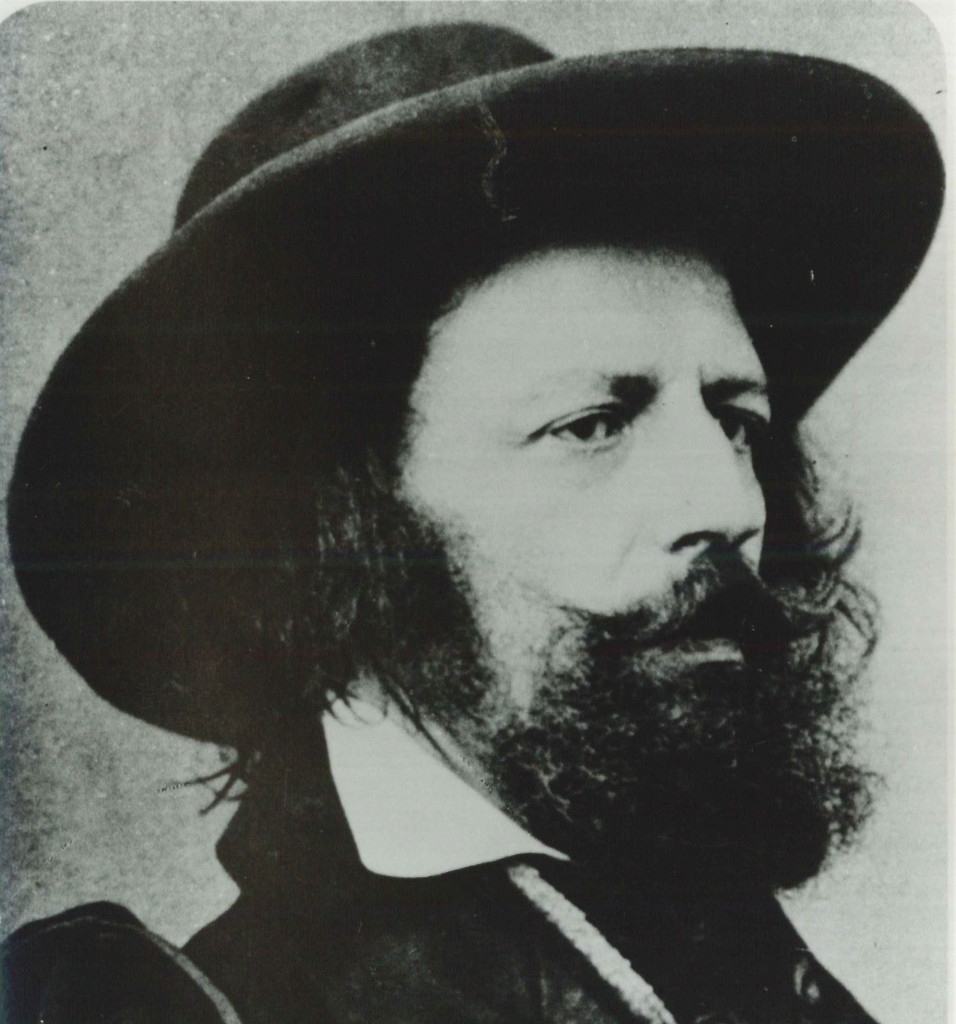 Courtesy of the Armstrong Browning Library
Courtesy of the Armstrong Browning Library
Written by Melinda Creech, Graduate Assistant, Armstrong Browning Library
Alfred, Lord Tennyson (1809-1892), poet laureate during most of Queen Victoria’s reign, has continued to be one of the most popular British poets. He is well known for his short lyrics such as “Break, Break, Break,” ”The Charge of the Light Brigade,” ”Tears, Idle Tears,” and ”Crossing the Bar.” In Memoriam A. H. H. was written to commemorate the death of his close friend Arthur Henry Hallam, who was engaged to Tennyson’s sister, Emily. Idylls of the King, a cycle of twelve narrative blank verse poems, retells the Arthurian legend.
Tennyson corresponded with Robert Browning, and the Armstrong Browning Library owns four letters written by Tennyson to Browning. The Library also owns thirty-six letters written by Tennyson to various other Victorian correspondents, and three manuscripts. Over 160 books related to Tennyson are owned by the ABL, many of them rare editions. Two of the books were owned by members of the Brownings’ family. The collection also contains a voice recording of Tennyson.
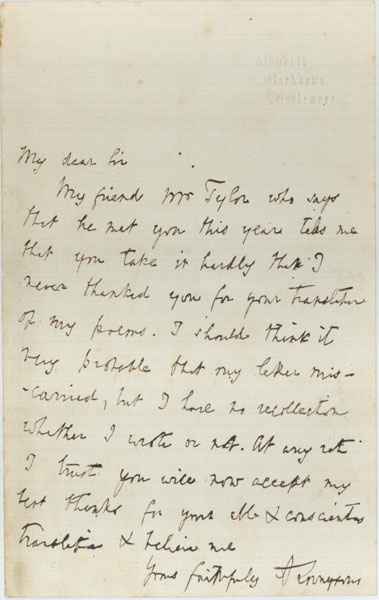 Letter from Alfred, Lord Tennyson to an Unidentified Correspondent. Undated.
Letter from Alfred, Lord Tennyson to an Unidentified Correspondent. Undated.
In this previously unpublished letter, Tennyson thanks this unidentified correspondent for their “able & conscientious translation” of his poems. By the end of Tennyson’s life, his poems had been translated into Italian, German, French, Dutch, Danish, Latin, Spanish, Hungarian, Swedish, Czech, Ancient and Modern Greek, Norwegian, Polish, and Serbian.
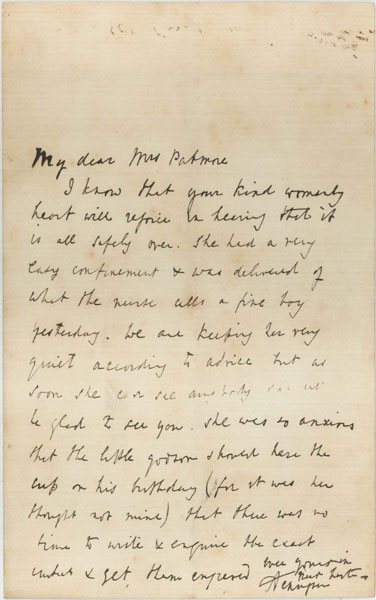 Letter from Alfred, Lord Tennyson to Mrs. [Coventry] Patmore. [12 August 1852].
Letter from Alfred, Lord Tennyson to Mrs. [Coventry] Patmore. [12 August 1852].
Tennyson says that he knows Mrs. Patmore’s…
kind womanly heart will rejoice in hearing that it is all safely over. She had a very easy confinement & was delivered of what the nurse calls a fine boy yesterday.
This passage refers to the birth of Hallam Tennyson on 11 August 1852, Tennyson’s eldest son.
Coventry and Emily Augusta Patmore named their second son Tennyson and asked the Tennysons to be his godparents. In the letter, Tennyson writes that Emily, his wife, is anxious that young Tennyson Patmore have his engraved cup for his birthday.
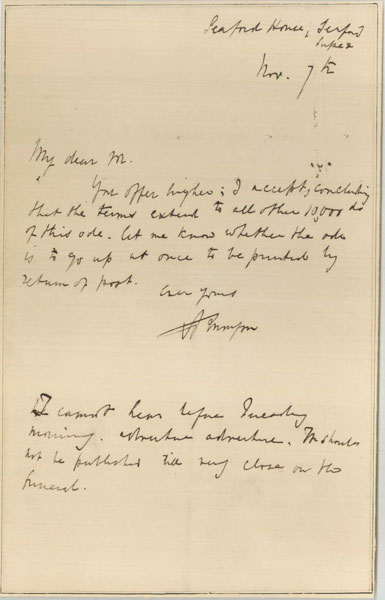 Letter from Alfred, Lord Tennyson to Edward Moxon. 7 November [1852].
Letter from Alfred, Lord Tennyson to Edward Moxon. 7 November [1852].
In this previously unpublished letter to his publisher, Tennyson accepts Moxon’s offer to publish his ode and requests that it “not be published until very close to the funeral.” Tennyson is likely referring to his “Ode on the Death of the Duke of Wellington,” which was published on November 16, two days before Wellington’s funeral.
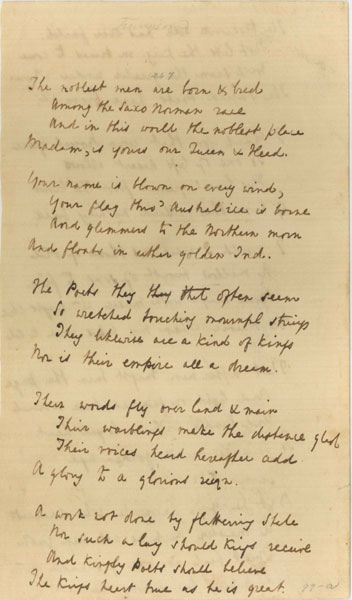

 Alfred, Lord Tennyson. [“To the Queen”]. Autograph Manuscript. Undated.
Alfred, Lord Tennyson. [“To the Queen”]. Autograph Manuscript. Undated.
This is an early autograph draft, substantially longer than the version published in Poems (1851). “To the Queen” was Tennyson’s first publication as Poet Laureate. The poem was published in 1873 as the epilogue to The Idylls of the King.
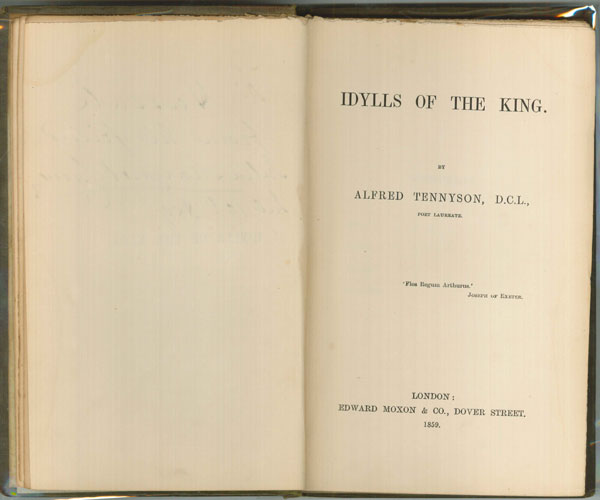
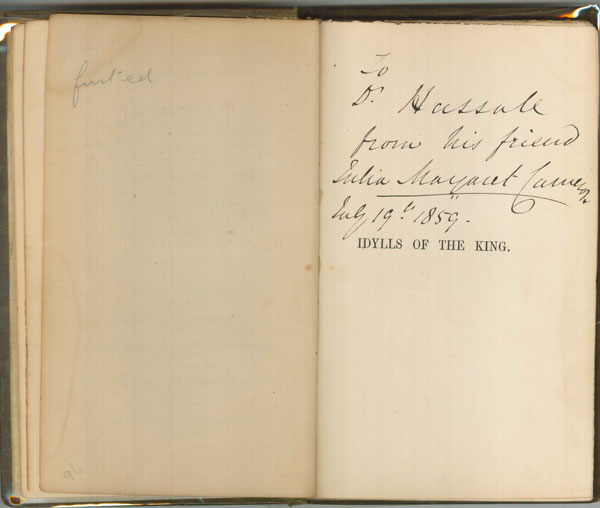 Alfred, Lord Tennyson. Idylls of the King. London: Edward Moxon & Co., 1859.
Alfred, Lord Tennyson. Idylls of the King. London: Edward Moxon & Co., 1859.
This copy is signed by Julia Margaret Cameron, famous photographer and friend of Tennyson. Cameron and Tennyson were neighbors on the Isle of Wight. Cameron produced her own copy of Idylls of the King, which included photographs of staged scenes from the poems and a photograph of Tennyson.
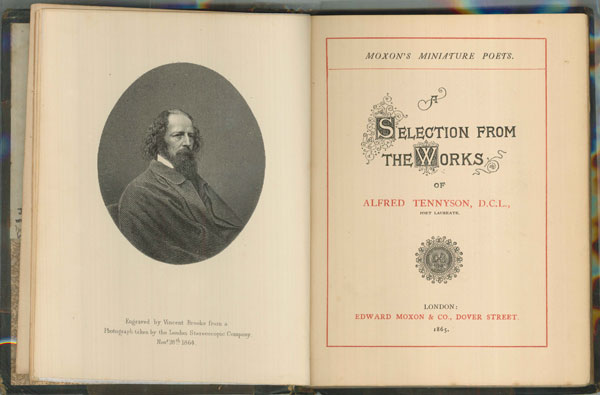
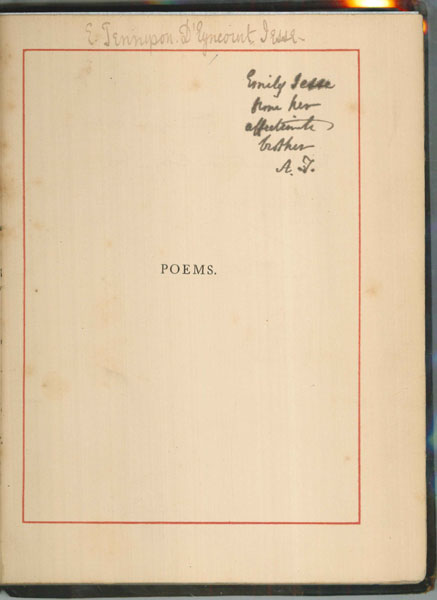
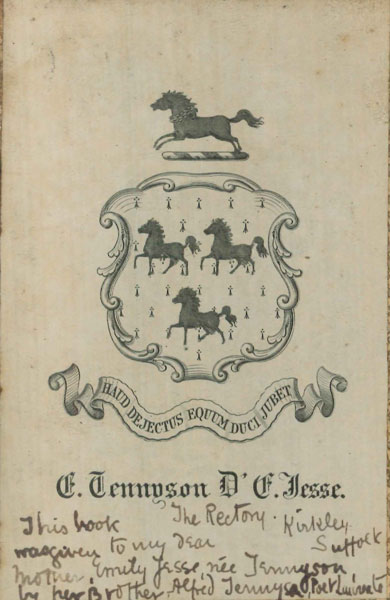 Alfred, Lord Tennyson. A Selection from the Works of Alfred Tennyson. London: Edward Moxon, 1865.
Alfred, Lord Tennyson. A Selection from the Works of Alfred Tennyson. London: Edward Moxon, 1865.
This volume is a first edition inscribed by Tennyson on the half-title to his favorite sister: “Emily Jesse from her affectionate brother A.T.” The book is also inscribed with the ownership signature of Emily’s son Eustace Tennyson D’Eyncourt Jesse. On his bookplate inside the front cover he has written: “This book was given to my dear Mother Emily née Tennyson by her Brother, Alfred Tennyson, Poet Laureate.”

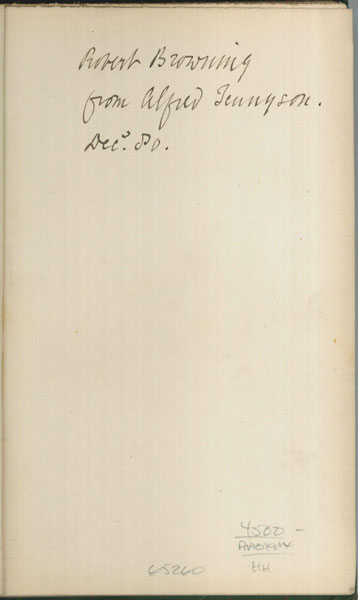 Alfred, Lord Tennyson. Ballads and Other Poems. London: C. Kegan Paul & Co., 1880.
Alfred, Lord Tennyson. Ballads and Other Poems. London: C. Kegan Paul & Co., 1880.
This volume from the Brownings’ library is inscribed by Robert Browning on the front free endpaper: “Robert Browning/ from Alfred Tennyson./Dec. ’80.”

 Alfred, Lord Tennyson. The Death of Oenone, Akbar’s Dream, and Other Poems. London and New York: Macmillan and Co., 1892.
Alfred, Lord Tennyson. The Death of Oenone, Akbar’s Dream, and Other Poems. London and New York: Macmillan and Co., 1892.
The book is inscribed by Hallam Tennyson, Alfred, Lord Tennyson’s oldest son: “Oct. 1892 to S.A.E. FitzGerald.”
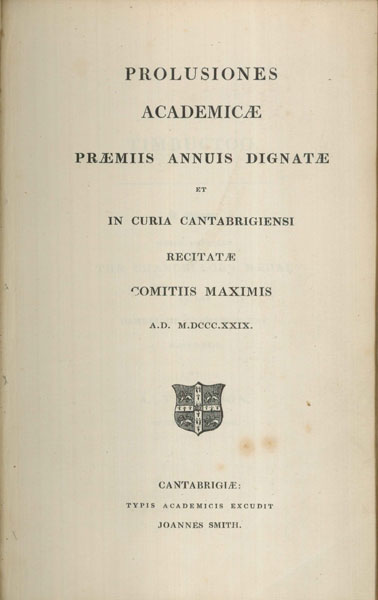
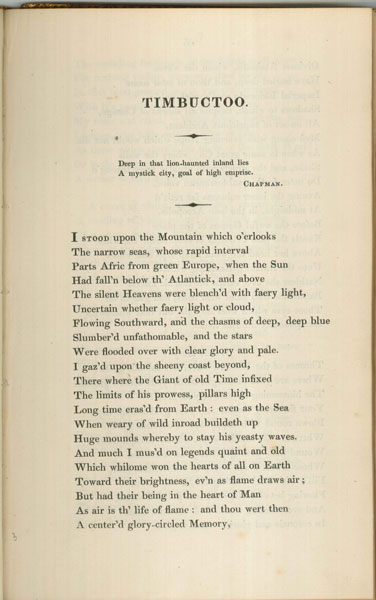
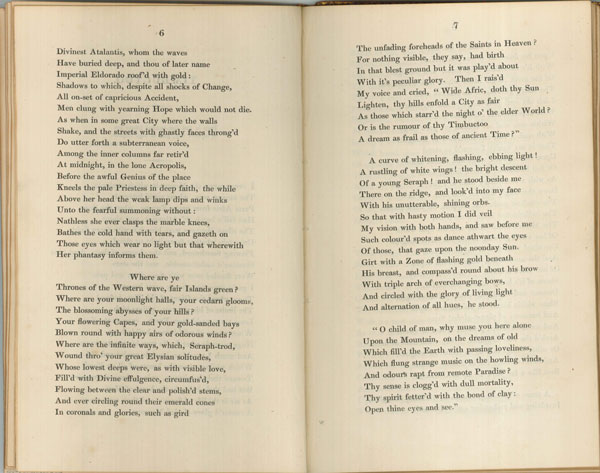
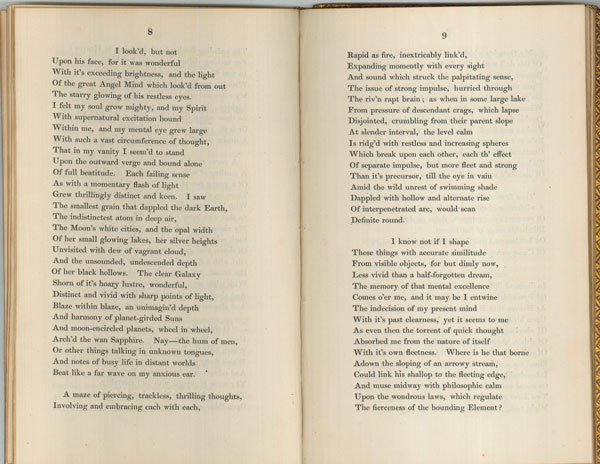
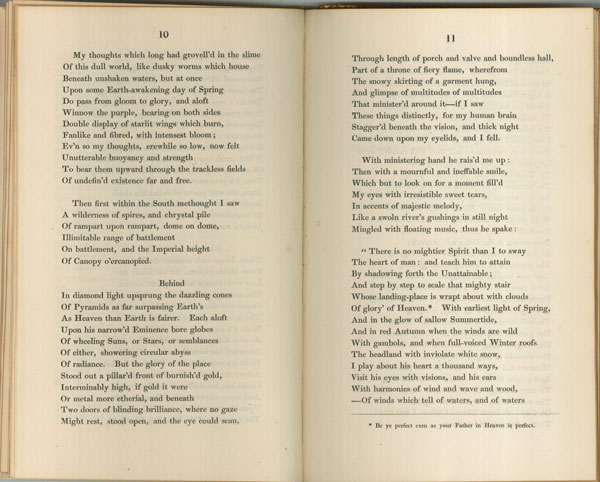
 University of Cambridge. Prolusiones Academicae Praemiis Annuis Dignatae et in Curia Cantabrigiensi Recitatae Comitiis Maximis, A.D. MDCCCXXIX. Cantabrigiae: typis academicis excudit J. Smith, [1829].
University of Cambridge. Prolusiones Academicae Praemiis Annuis Dignatae et in Curia Cantabrigiensi Recitatae Comitiis Maximis, A.D. MDCCCXXIX. Cantabrigiae: typis academicis excudit J. Smith, [1829].
This volume contains Tennyson’s first publication, “Timbuctoo,” a poem which received the Chancellor’s medal at the Cambridge commencement, 1829. The poem is a reworking of one Tennyson wrote at age fifteen called “Armageddon.”

